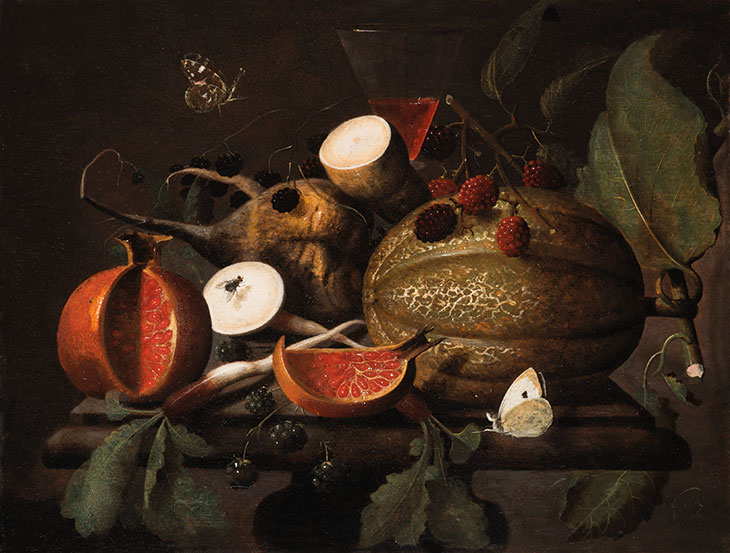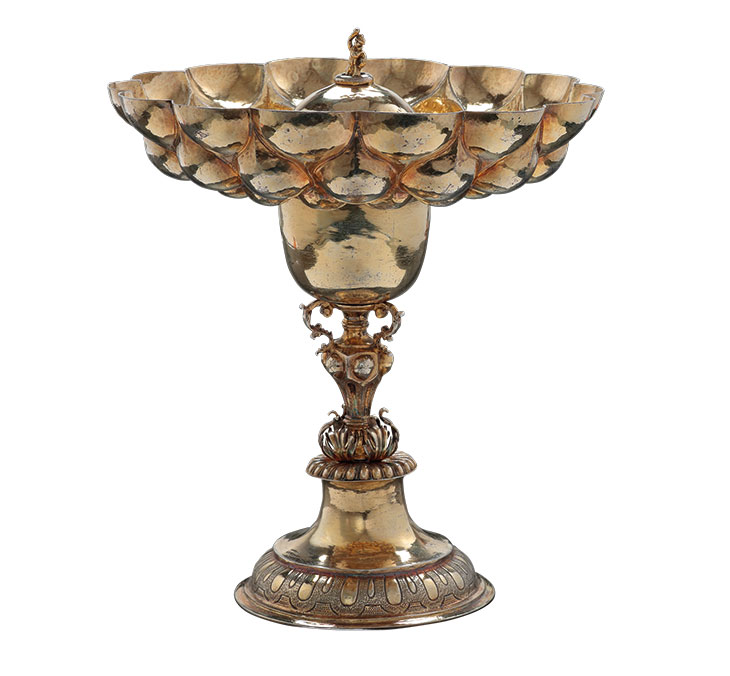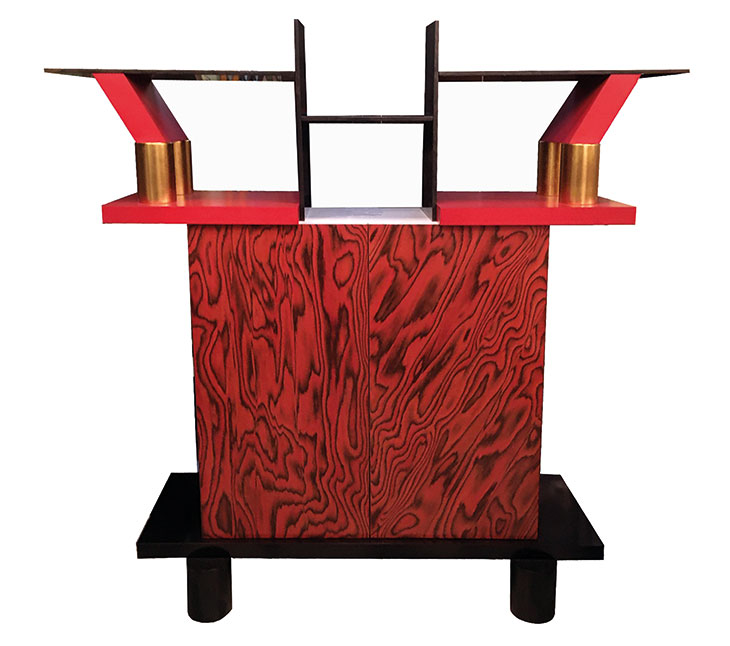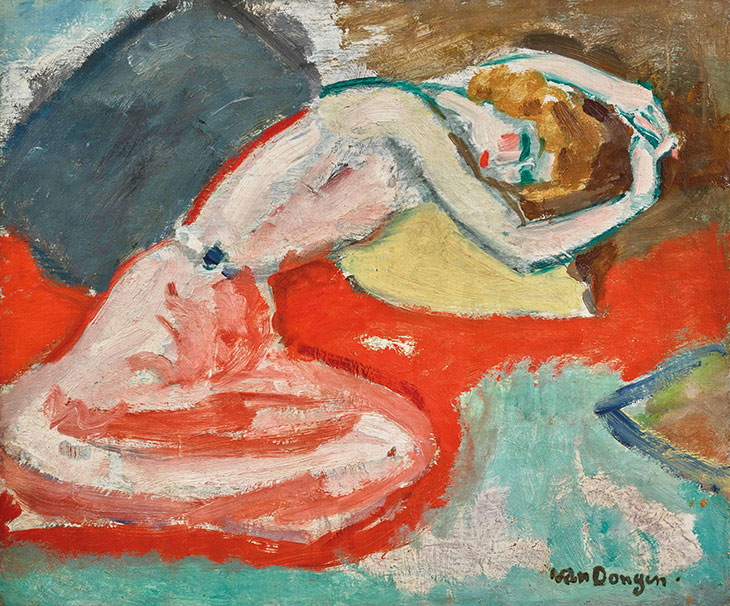There are some objects that appeal to the collector not for their beauty, but for their provenance: for the association with a previous owner, or for what they represent. Such an appeal applies to five monumental segments of the Berlin Wall that will be sold at a charity auction to celebrate BRAFA’s 65th anniversary in 2020 (26 January–2 February). Last November marked 30 years since the boundary between East and West Berlin came down in 1989, from which moment fragments of its concrete bulk were pocketed by witnesses of the historic event – mementoes of an end to decades of division.
If these graffitied concrete slabs seem an unlikely focal point for a fair known for its quiet elegance and haute-époque exhibits, it is above all their message that spoke to the fair’s chairman, Harold t’Kint de Roodenbeke. ‘I first came across one of these pieces in a fishing village in Nova Scotia – it felt completely improbable seeing such a thing there, but the reaction of people around was almost spiritual, like it was a stela […]. The idea for the city of Berlin is to spread them all over the world, to say: We don’t want this to happen again.’
Among the 50 Belgian and 83 international exhibitors at the fair proper, there is plenty on show to please the eye alone; though provenance, of course, always helps (and BRAFA’s vetting process is one of the strictest). Part of the Belgian antiquarian booksellers’ association (CLAM), Lex Antiqua from Ulbeek has among its stock a Rembrandt etching marked with its original price. This is one of only a dozen known etchings by the Dutch master with its price written on the reverse, according to the gallery, suggesting it was sold directly from his shop in Amsterdam.
Still life with melon, blackberries, pomegranate, black radishes and butterflies and a glass of wine (1697), Martinus Nellius. Klaas Muller (approx €75,000)

One of Rembrandt’s pupils, the Bavarian painter Christopher Paudiss, will also make an appearance. ‘He studied under Rembrandt, but his style is almost 19th-century Symbolist,’ says veteran BRAFA exhibitor Klaas Muller, who will present a portrait by Paudiss, together with some sumptuous 17th-century still lifes. ‘It’s very mysterious. The composition is very modern, too, for a 17th-century work: a rabbi seen from the back.’ The painting has been given its attribution to Paudiss by Dutch paintings specialist Christopher Brown, notes Muller, a dealer who is no stranger to positive attributions. In 2018 he made news at the fair by presenting a rediscovered Rubens painting, Diana and Nymphs Hunting Deer. ‘I was very lucky, I bought it at auction during the summer when everyone was away. I thought it might be Rubens, but it’s not up to me to decide!’
Among the Old Masters at BRAFA, Dutch and Flemish artists, unsurprisingly, prevail. Both Jan Muller from Ghent and the Brussels-based gallery Costermans are presenting apt wintery scenes by Brueghel the Younger – the former a small roundel, the latter an oil on panel, Adoration of the Magi in the Snow. Here the artist gives Flanders’ Habsburg rulers a subtle but central role, picking out their coat of arms in gold on the blankets keeping the chill off a pair of heavily-laden donkeys.
‘Hansel im keller’ cup (c. 1580), mark of Jobst Eissler, Nuremberg. D’Arschot & Cie (€85,000–€100,000)

Costermans’ elegant mansion in the Sablon district is worth a visit in itself – as is that of another Brussels-based gallery, Desmet, which recently moved to a grand townhouse on Rue des Minimes. ‘It might just be gossip,’ says Tobias Desmet, ‘but it’s said to have been built for one of the illegitimate daughters of Leopold II, and used only for parties.’ Its contents are likely to encourage decadent levels of spending, too. The gallery will bring to BRAFA a marble corbel in the form of a young man’s head from the Duomo in Milan (c. 1410–20). The sculpture was made by a pupil of Jacopino da Tradate, who directed the craftsmen working on the carved decorations of the cathedral in the early decades of the 15th century. It came on to the market in the 19th century during one of several restorations to the building, when many of its corbels were replaced with copies. Providing a fleshy torso to that head, meanwhile, is a Roman statue fragment of Silenus in the act of pouring from a wineskin. From the 1st or 2nd century, it would have functioned as a fountain, and has close comparisons at Newby Hall in Yorkshire and Palazzo Doria Pamphilj in Rome. ‘The nice thing about this piece is its surface,’ Tobias Desmet comments. ‘Sometimes they over-clean Roman marbles, but with this they kept the calcification on the back of the statue.’
There are impressive antiquities to be found elsewhere, too. Antiquarium, a first-time exhibitor from New York, will show a Roman marble urn from the Antonine era with superbly knotted handles, the strigillation on its body an ancient echo of the rococo swirls found on Belgian silver coffee pots in the 18th century. Examples of the latter, and other silver- and goldware, can be found at D’Arschot & Cie. A silver-gilt ‘Hansel im keller’ (‘Hansel in the cellar’) drinking cup is a fine example of several playful objects in its catalogue. Made in Nuremberg around 1580 by the master Jobst Eissler, this was the Renaissance version of an extravagant baby-shower gift: as the vessel is filled with wine, a small figure – Hansel – rises up from the central dome, signalling the recipient’s pregnancy and prompting a toast to the unborn child.
Memphis ‘Freemont’ cabinet (1985), Ettore Sottsass. Robertaebasta (€22,000)

The long-established presence of ethnographic art dealers in the host city makes for some first-class displays at the stands of Didier Claes and Deletaille, among others, while 20th-century decorative arts and design also have a strong showing. The Brussels-based Gokelaere & Robinson will present pieces by maestri such as Gio Ponti and Alvar Aalto. ‘Our theme will be colour, and we have chosen green, an important colour for Aalto,’ explains Stanislas Gokelaere. A tea trolley by the Finnish designer from 1937 is sure to be the envy of many a fairgoer, while at the opposite side of the colour wheel is a lipstick-red veneered Memphis cabinet by Ettore Sottsass from 1985, at the stand of Milan-based Robertaebasta.
Painted highlights from the 20th century range from a twilight landscape by William Degouve de Nuncques (1908) at Studio 2000 Art Gallery to a charming café-terrasse scene of 1907 by Auguste Herbin at Rueb Modern and Contemporary Art, both newcomers to the fair. After all of which, you may want to make like Van Dongen’s graceful red-headed woman at Galerie Jean-François Cazeau, and find a plump pile of cushions on which to rest your weary limbs.
La Chemise (1905), Kees van Dongen. Galerie Jean-François Cazeau (€1.8m)

For more information visit BRAFA’s website.
From the January 2020 issue of Apollo. Preview and subscribe here.



